Glean’s personal study app ensures users don’t waste the information that matters. Students and employees can capture everything from class and work, stay organised, review content at their own pace, and build personalised resources through a structured learning process.
Glean will be exhibiting at the Dyslexia Show at booth D103 and speaking at the neurobox Theatre at 10am on Saturday 16th March.
For some learners, stepping into a classroom can feel overwhelming. Textbooks speak an unfamiliar language, assessments pose seemingly insurmountable challenges, and the very structure of the learning environment seems designed to exclude rather than include. The traditional approach of “accommodation” – offering individualised support after barriers arise – can feel more like a band-aid solution. It addresses immediate needs at an individual level but fails to truly transform the learning landscape into one where all students can thrive.
The problem
Let’s face it, “accommodation” often falls short. Imagine a student with dyslexia struggling to decipher dense paragraphs of text. Offering them a larger font might be a helpful quick fix, but it doesn’t address the underlying challenge of processing written information. Similarly, providing a quiet corner for a student with ADHD might temporarily alleviate distractions but doesn’t cater to their need for movement and kinesthetic engagement.
While traditional accommodations aim to support diverse learning needs, they often present limitations, particularly when relying solely on confirmed diagnoses. Here is why a broader approach is crucial:
Limited scope
Focusing solely on the 1.5 million pupils with identified SEN risks overlooking significant numbers of students who struggle yet fall outside these categories. Undiagnosed learning differences, emerging challenges, and even temporary difficulties can significantly impact learning.
Stigma and isolation
Relying solely on individual accommodations can lead to unintended consequences. Outside of education, one in four employees hide their dyslexia from their employers. Receiving accommodations based on a diagnosis can contribute to feelings of being singled out or different, potentially amplifying social stigma and isolation.
Focus on deficits vs. potential
The current system often frames accommodations as addressing individual deficits, potentially hindering a strengths-based approach. This neglects the unique character and diverse strengths each student possesses. We should strive to create learning environments that nurture individual potential, not solely focus on perceived “weaknesses”.
A more inclusive approach
Moving beyond diagnosed-based accommodations necessitates a broader perspective. Universal Design for Learning (UDL) offers a framework to create inclusive learning environments that benefit all students, regardless of diagnoses or specific needs. This proactive approach incorporates diverse learning styles, fosters flexibility, and leverages assistive technologies, ultimately enriching the learning experience for everyone.
By recognising the limitations of relying solely on diagnosed-based accommodations, we can embrace a more inclusive approach that celebrates individual differences and empowers all learners to thrive. UDL, combined with a strengths-based perspective, offers a promising path towards creating truly equitable and enriching learning environments.
The solution: UDL & AT as a team
Instead of patching the problems, we need a fundamental shift in our approach. This shift comes in the form of UDL, a framework that emphasises creating flexible and accessible learning environments from the very beginning. Unlike the “one-size-fits-all” model, UDL recognises the diverse ways learners engage with information, express themselves, and demonstrate their understanding. Developed by CAST, it operates on three core principles:
- Engagement: sparking interest, motivation, and perseverance in all learners.
- Representation: presenting information in multiple formats to cater to different learning styles.
- Action & expression: providing diverse ways for learners to demonstrate their knowledge and skills.
This is where Assistive Technology (AT) steps in as a powerful partner. These tools don’t just bridge the gap between individual needs and the learning environment, they act as a springboard for deeper engagement, enhanced learning, and individual expression. The result being that AT can fully align with each UDL principle.
Engagement
Imagine a student with attention challenges attending a traditional lecture. Their commitment to the learning goal will be impacted by their self-regulation. A lecture recording being available can alleviate some pressure the student may be feeling. AT such as Glean can take this further by offering note taking synchronised to the audio recording as well as live captions to help students refocus and self-regulate live in the lecture. Educational games and simulations can transform abstract concepts into interactive experiences, sparking curiosity and motivation in all learners.
Representation
Students who engage more with visuals can benefit from mind maps that break down complex information into visually appealing and easily digestible chunks. Students with auditory processing challenges can leverage audiobooks to access content in a format that aligns with their strengths. Imagine history coming alive! Augmented reality applications can overlay historical figures and events onto real-world environments, creating an immersive and engaging learning experience that transcends traditional textbooks.
Action & expression
Students with motor impairments can use alternative keyboards or dictation tools to express themselves freely in writing assignments, removing the physical barrier of handwriting. Speech-to-text software empowers students with communication challenges to participate actively in discussions and share their ideas without feeling limited by their verbal abilities. Communication boards provide students with complex communication needs with a powerful tool to express themselves, ask questions, and actively engage in the learning process.
As technology continues to evolve, the range of AT tools available will only expand, offering even more personalised and effective ways to support diverse learners. Remember, AT is not just about providing access; it’s about removing barriers, unlocking potential, and empowering every student to thrive in the learning environment.
By harnessing the power of UDL and AT as a team, we can move beyond the limitations of “accommodation” and create truly inclusive learning experiences where every student feels seen, heard, and supported.
The benefits: more than just access
The true power of UDL and AT lies not just in providing access, but in unlocking potential. Research shows that when these tools are implemented effectively, the benefits extend far beyond individual needs:
- Enhanced engagement & motivation: diverse learning experiences cater to different learning preferences, leading to increased engagement and a love for learning in all students.
- Improved academic outcomes: by removing barriers and providing multiple pathways to understanding, UDL and AT can significantly improve academic performance for all learners.
- Critical thinking & problem-solving: engaging with information in various formats and expressing knowledge through diverse means fosters critical thinking and problem-solving skills.
- Confidence & independence: when students feel empowered to learn on their own terms, their confidence and sense of independence blossom, leading to a more positive learning experience.
Overcoming challenges
Of course, the road to full inclusivity isn’t without its challenges. Lack of awareness among educators and policymakers, limited resources and funding, and time constraints can be hurdles to overcome. Providing educators with opportunities to learn about UDL and AT implementation is crucial for successful integration. Collaboration between educators, AT specialists, families, and students themselves is essential for creating truly inclusive learning environments. Advocating for increased funding and exploring free and open-source AT resources can make implementation more feasible.
Creating truly inclusive learning experiences is partly about making the best tools available. Tools like Glean, a personal study AT note taking solution, can empower learners to personalise their learning experience and actively engage with the material in ways that suit their individual needs and preferences. Glean’s features, such as recording lectures, live captions, transcript generation and rich media integration, offer students flexibility and choice, ultimately building a sense of ownership and control over their learning journey.
Yet it is not just about providing the right tools, but about fostering a culture of acceptance and collaboration. This means celebrating individual differences, valuing diverse perspectives, and ensuring that every learner feels seen, heard, and supported. Let’s move beyond the limitations of “accommodation” and embrace the transformative power of UDL alongside AT to build learning environments where every student has the opportunity to unlock their full potential and thrive.

